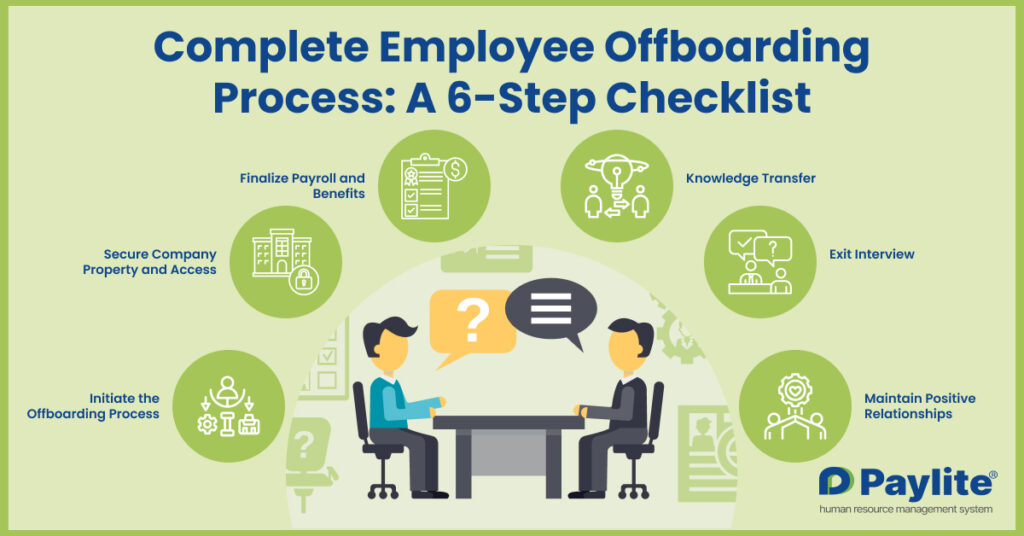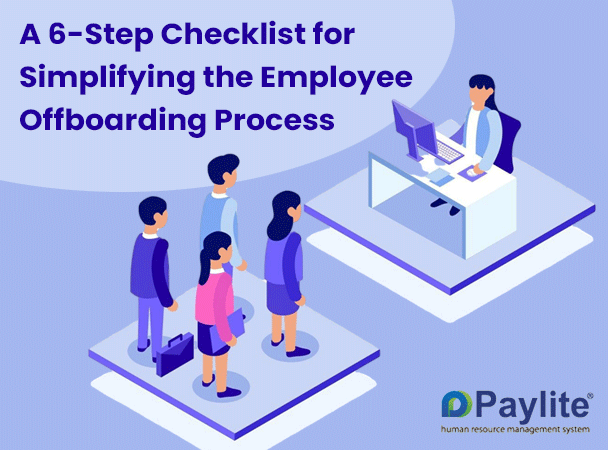All good things must come to an end. In the office environment, it often means saying goodbye to valued employees. While departures can be bittersweet, the way you handle the offboarding process can significantly impact your company’s reputation and future employee morale. A well-executed offboarding process isn’t just about paperwork and formalities. It’s about humanizing the experience, ensuring a smooth transition, and leaving a positive final impression.
In this blog post, we’ll delve into the essential steps to create an effective offboarding checklist, from securing company property to conducting exit interviews. We’ll explore how to maintain positive relationships with departing employees and why it matters. Join us as we navigate the complexities of offboarding and discover how to make the process as seamless and respectful as possible.
Why an Employee Offboarding Checklist is Important for the HR
A well-structured offboarding process is a critical component of HR strategy. It not only ensures a smooth transition for departing employees but also benefits the organization in several ways:
Mitigating Legal and Security Risks
A comprehensive offboarding checklist helps to minimize legal and security risks. By promptly deactivating access to company systems and returning company property, organizations can protect sensitive information and avoid potential legal liabilities.
Facilitating Knowledge Transfer
A smooth knowledge transfer is essential to maintain business continuity. By documenting critical processes and assigning responsibilities to remaining employees, organizations can minimize disruptions and ensure a seamless transition.
Gathering Valuable Feedback
Exit interviews, a key part of the offboarding process, provide valuable insights into the employee’s experience. By analyzing feedback, HR teams can identify areas for improvement in areas such as management practices, company culture, and employee engagement.
Maintaining Positive Relationships
A positive offboarding experience can foster goodwill and maintain a positive company reputation. By treating departing employees with respect and professionalism, organizations can encourage them to remain brand ambassadors and potentially return as boomerang employees.
Enhancing Employee Morale
A well-executed offboarding process can have a positive impact on the morale of remaining employees. By demonstrating a commitment to fairness and transparency, organizations can boost employee satisfaction and loyalty.

The Importance of a Positive Offboarding Experience
A 2023 study by Gallup revealed that a staggering 24% of employees experience rudeness or hostility during the offboarding process. This highlights the need for a more empathetic and professional approach. A positive offboarding experience can lead to:
- Improved Employer Branding: Positive word-of-mouth can attract top talent.
- Reduced Turnover: A positive exit can leave a lasting impression and encourage employee retention.
- Increased Employee Engagement: A smooth transition can boost morale among remaining employees.
By prioritizing employee offboarding, HR teams can contribute to the overall success of the organization.
6 Activities You should Include in Your Offboarding Checklist
A well-structured offboarding process goes beyond the mere completion of exit interviews. It’s about preserving institutional knowledge and maintaining positive relationships with departing employees.
While the specific steps may vary depending on the reason for the employee’s departure, a thoughtful and inclusive approach is always key.
Here are 6 steps to guide your offboarding process:
Step1: Initiate the Offboarding Process
The first step in the offboarding process is to officially communicate the departure to all relevant parties. This includes informing the employee’s direct manager and team members. A clear and concise announcement can help minimize rumors and speculation.

Key considerations
Timing: Schedule the announcement in a way that minimizes disruption to ongoing projects.
Communication: Use a clear and empathetic tone in your communication.
Documentation: Keep a record of the offboarding process for future reference.
Step2: Secure Company Property and Access
To protect your company’s assets and sensitive information, it’s crucial to secure all company property and deactivate employee access. This involves:
Collecting company property: Gather items such as laptops, phones, keys, and access cards.
Deactivating access: Disable the employee’s access to company systems, email accounts, and software.
Returning personal belongings: Ensure that the employee’s personal belongings are returned promptly.
Step3: Finalize Payroll and Benefits
Accurate and timely payroll processing is essential to maintain a positive relationship with the departing employee. Key steps include:
Final paycheck: Calculate and issue the final paycheck, including any accrued vacation or sick time.
Benefit termination: Terminate any ongoing benefits, such as health insurance or retirement plans.
Tax documentation: Provide the necessary tax documentation, such as W-2 forms.
Step4: Knowledge Transfer
A smooth knowledge transfer is crucial to minimize disruption to ongoing projects and ensure business continuity. Consider the following strategies:
Documenting processes: Create detailed documentation of the employee’s responsibilities and procedures.
Cross-training: Train other employees to take over the departing employee’s duties.
Transition meetings: Schedule meetings to discuss ongoing projects and hand over important information.

Step5: Exit Interview
An exit interview is a valuable opportunity to gather feedback on the employee’s experience and identify areas for improvement. Key questions to ask include:
Reasons for leaving: Understand the employee’s motivations for leaving.
Job satisfaction: Assess the employee’s satisfaction with their role and responsibilities.
Manager and team relationships: Evaluate the quality of the employee’s relationships with their manager and team members.
Company culture: Gain insights into the company culture and work environment.
Step6: Maintain Positive Relationships
Even as the employee is leaving, it’s important to maintain a positive relationship. This can help preserve your company’s reputation and potentially lead to future opportunities.
Thank-you note: Express gratitude for the employee’s contributions.
Positive reference: Provide a positive reference, if appropriate.
Alumni network: Consider creating an alumni network to stay connected with former employees.
By following these steps and maintaining a positive and professional approach, you can ensure a smooth and successful offboarding process.
Conclusion
A well-executed offboarding process is a strategic investment that yields significant benefits. By prioritizing a smooth and respectful transition, organizations can protect their reputation, maintain positive relationships with departing employees.
Remember, offboarding is not just about saying goodbye; it’s about leaving a lasting impression. By following the steps outlined in this blog, HR teams can ensure a positive and productive offboarding experience for both the organization and the departing employee.
So, the next time you have to bid farewell to an employee, remember to handle the process with care and consideration. It may be the last interaction, but it can leave a lasting impact.

